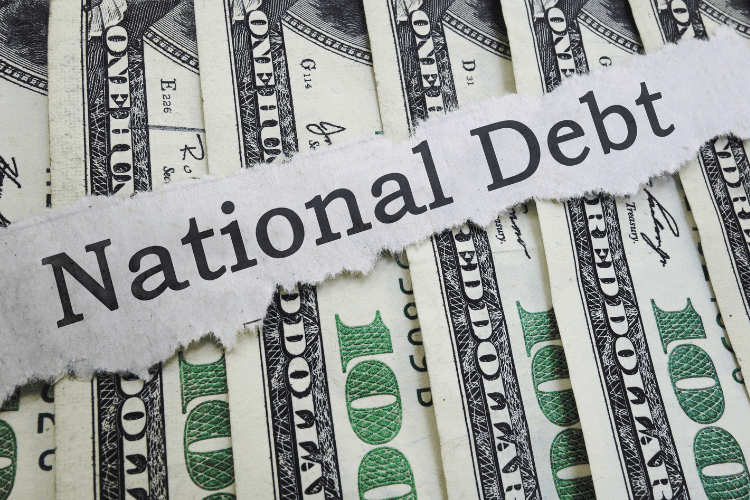America’s Debt Interest Surpasses $1 Trillion This Fiscal Year

The U.S. hit a new financial milestone — a deficit of $1.8 trillion.
While our economy remains strong, this new figure marks a massive shift that could be a wake-up call for everyone.
Understanding how we got here, what the deficit means, and how it can impact the average American in the future could give us a glimpse of what our future looks like.
Why Is Our Debt Interest So High?
Our current debt interest boils down to three main factors: debt, ballooning interest rates, and persistent deficit spending. Let’s take a look at each of these:
1. Rising National Debt
The national debt has been debated for years if not decades. As of September 2024, it was officially over $35.27 trillion.
Programs like social services, infrastructure, and the military need funding. That being said, almost every country needs to borrow money to “keep the lights on” and ensure the country’s still running. But just like when you’re paying back a loan or using a credit card, countries must pay back interest rates on any borrowed money.
This cycle leads to more debt, which leads to even higher interest payments.
2. Higher Interest Rates
In recent years, the Fed has raised interest rates to over 5% to keep inflation down and address other economic challenges.
While rates are slowly starting to cool, the cost of borrowing is still much higher than in the last 15 years. For a government with trillions in debt, even a rate increase can translate into billions of additional dollars in interest payments each year that we might not be able to repay.
3. Deficit Spending
Deficit spending, or spending more than the government collects in revenue, is nothing new. We’ve run a budget deficit for most of the country’s history.
This approach has allowed the government to invest in programs and initiatives without raising taxes or cutting spending, but it’s also been a massive reason why our debt is so high right now.
Every year of deficit spending increases the debt and the interest payments the government needs to pay off. This creates long-term issues that become too much, especially if interest rates rise.
How Do We Compare To Other Countries?
The U.S.’s situation is unique and concerning in the global landscape.
Let’s be clear: Most developed countries have large debt burdens. However, the sheer scale of U.S. debt and its role as the world’s largest economy mean that if something happens, its financial decisions could have serious consequences.
We also spend a whopping 10% of our budget on interest payments. This limits the nation’s opportunity to invest in infrastructure, education, and other programs that could boost our economy.
What Could Happen Now That We Hit 1 Trillion
Reaching the $1 trillion mark in debt interest payments isn’t another talking point; it could lead to serious consequences. As we have less money to spend, the government might need to cut back on services that millions of Americans rely on.
There’s also a chance that the government might raise taxes to pay off our debts. According to recent studies, even just a 2.2% growth from taxes could bring our debt down.
However, only time will tell what the U.S. will do to handle the growing debt crisis in the future.
Should We Be Worried?
It’s shocking to see the U.S. paying $1 trillion in debt interest.
However, we must remember that the U.S. economy is still the world’s strongest and has many assets and resources. We’ve also had multiple deficits and recessions throughout history, yet somehow, we’ve found a way out of these issues.
Despite the positives, we can’t continue the way things are going.
If the government doesn’t develop tax reforms, manage spending, or reflect on its policies, the situation will become more unmanageable in the next few decades.
The Bottom Line
America is going through one of the biggest debt crises in history. And while it’s worrying, we’re still in time to turn things around.
With a few smart economic decisions, the U.S. has the potential to bounce back and create a more sustainable financial future.
Read more:










